Original Pinspiration (just scroll down a little):
It would probably be more accurate to say "blanket" but it is quilted :) I am definitely a novice quilter. For me, quilting is a definite step up from sewing clothes and other crafty projects. I learned how to sew a straight line a very long time ago, but piecing quilts was something that seemed just a little out of my reach. Matching seams and figuring out the math were beyond my comprehension. Now I think it was just that I had a mental block because I didn't know anyone who could show me the ropes. As I was thinking about the kinds of projects I look for when trying something new, I stumbled across this idea. Why not show how *easy* quilting can be and make a small blanket in a week?!
That said, it did take me a little more than a week, partially because I was video taping and editing the process as well as trying to find a sunny day (rare here in late winter) to take some decent pictures. Each step along the way should take about 1-1/2 to 2 hours, except the final binding which I chose to sew by hand. Check it out ...
Day 1 Buy & prewash your fabric.
Day 2 Cut out all squares & bias strips. Mark neutral squares.
Day 3 Sew triangle pieces & cut.
Day 4 Sew HST pieces into squares.
Day 5 Sew squares together & make quilt sandwich.
Day 6 Machine quilt.
Day 7 Bind your quilt.
1 yard neutral (brown)
1/4 yard each color 1 & 2 (greens)
1/4 yard each color 3 & 4 (pinks)
coordinating threads
1 yard backing
1/3 yard edging fabric or about 130 inches bias tape
fusible flannel
quilting spray
fabric scissors
light marking pen
A couple of notes:
* You could use fat quarters for the colored fabrics, but I chose to use the 9" strip 1/4 yards. You should have leftover fabric either way.
* I don't have a long-arm or quilting machine, so all this is done on my regular sewing machine. Maybe someday, but this just shows that with a little patience it can all be done on a very basic machine.
* You may want to use the video above and the directions below in tendem, especially if this really is a beginning project for you. Sometimes I explain things a little differently and between reading, hearing and and seeing it, things will probably make better sense. If not, please ask any questions you have in the comments below so that I can address them and everyone can benefit.
* Finally, partway through the video, I decided to make the rows one block longer. It was looking like a doll quilt with the original 4 blocks by 5 blocks. The supplies above and instructions below reflect this final change.
Day 1: Buy & prewash your fabric.
Unless you already have your fabric at home or are making this a scrapbuster project, this may take a little longer today if you're like me and take your time at the fabric store. Or bettery yet, check out multiple stores seeking just the right look for the project. When I prewash my fabrics, I always use the gentle cycle and throw in a Shout Color Catcher sheet. These are an awesome little invention! If you haven't tried them, I definitely recommend them. I always throw them in when prewashing new fabrics and the first one or two washes with new clothes. After your fabric is washed and dried, don't forget to iron--this is very important so that when you cut, your lines are truly straight and not skewed by puckers and folds.
Day 2: Cut out all squares & bias strips. Mark neutral squares.
Today you are cutting out the small squares for the quilt top that will become the Half-Square Triangles (HSTs). You are cutting them all out to be 4 inches. You need 50 neutral squares, 10 each of colors 1 & 2, and 15 each of colors 3 & 4. Just make separate little stacks of each fabric for right now. Next, on the back of each of the neutral squares, draw one straight line diagonally down across two corners. Unless you've chosen a fabric with an obvious pattern, it won't matter which way you choose to go. Also, make sure you're NOT using a marker that has disappearing ink -- it won't last until tomorrow if you do.
Finally, if you've chosen to make your own bias strips for your binding, cut that fabric into 2-inch strips. Just set these aside for now. You won't need them until the end; I just like to get all my cutting done at once.
Day 3 Sew triangle pieces & cut.
Before we begin sewing, we need to match up each neutral square with one colored square. Order doesn't matter at this point, just pair them up and put them into one big pile. Put each pair right sides together and pin in the middle. I do try to match up the edges to make it easier to grab and go when sewing in the next step.
For this next step, we are going to be sewing the squares together into one long chain. For the whole quilt top, use 1/4-inch seams. For all piecing, I use a neutral (black or white) thread. You can match it with your colors, but I figure no one will see it so I save the more expensive colored quilting thread only for the actual quilting.
First we will be sewing down the left sides of the diagonal lines we drew on the neutral squares yesterday, then when we've done each of the 50 squares, you'll turn the whole lot around and sew down the right sides of that same line. Each square will now have two seams 1/2-inch apart. Cut the threads connecting each square together and place in a pile. Using your quilting rule and rotary cutter, cut directly in between the seams on each square on the line that you previously marked. Each resulting triangle will now have a 1/4-inch seam. Once you've cut each square in half, press seams from the back. I point all my seams in one direction, but you can press them open if you prefer that. Make sure to press from the front, too and make that diagonal seam as crisp as possible. As you finish each square, you might want to make 4 stacks--one for each of the different color fabrics.
Day 4 Sew HST pieces into squares.
Today you first want to lay out your squares into the pattern they will make for the quilt top. Each colored chevron row will be the center of the blocks we will piece together today. For each row, I used 10 of each color (either 1 & 2 OR 3 & 4). I laid them all out on my bed how I wanted it to look before I started stitching.
Now you're going to piece the squares together. Each square will be made up of four smaller HST squares. For this part of the project, focus in making the center seams match--the sides may not quite match up. Pin as close to the diagonal seams as you can to make sure that they match up as perfectly as possible. I actually ended up taking out a few of these and re-sewing when I opened them up and saw that they were "off." First you'll sew the top two HST squares together (then press the seams), then the bottom two (pressing seams in the opposite direction of the tops), then the top rectangle to the bottom rectangle (pressing seams as desired--I usually press towards the center of the blanket here). I did pin at each of these steps, very carefully, because I wanted to make sure that each seam lines up as close as possible. Taking this extra time here will make the chevrons match up better for tomorrow's sewing as well as make cleaner chevron points for your rows.
As I finished each square, I put the squares for each row into a separate pile.
Almost done for today ... all we have left is to "square up" each newly pieced square. Once you get the idea this actually goes quickly. The idea is that you want each square to be exactly the same size so that seams line up better and the overall layout is even. For these squares, I measured 3-1/4 inches using my quilting ruler from each edge. I trim off any overage, usually a very little bit, if any. I found that i didn't have a lot of this to do, but it was worth the effort for when I was lining up edges to make the quilt top--it took out some of the guess work in making things line up at points.
Day 5 Sew squares together & make quilt sandwich.
Today looks like a lot of instructions, but it goes pretty fast :)
Sewing the squares together goes pretty quickly. Again, I lay out my squares to I can see my quilt top and make sure that everything is placed just right. First, we will sew the five squares together in each row. Starting at the top-left-corner, I take the first two pink squares. Place the second one right sides together onto the first. Again, pin them together making sure that all the corners and seams match as cleanly as possible. Undoing and restitching at this stage really does take extra time, so try to get it right the first time. I found that being slightly off (no more than 1/8-inch) really didn't show up too badly, but anything more than that I ended up correcting.
Once you have all five rows complete, the rows need to be stitched together. Take the second (green) row and place it right-sides-together on top of the first (pink) row. Pin each seam. Once again, you really want those seams to match up so that the points of your chevrons are parallel and not uneven. I press all the row seams towards the top of the blanket.
Whew! Now that all your rows are sewn together, your quilt top is done! Yay!! The quilt sandwich is pretty fast and easy. Because this is a pretty small blanket, I could save my back and do all the work comfortably on my kitchen table. Lay out the backing fabric face down on the table. I use the lower-right corner as my guideline. Next I lay the fusible flannel down on top of that with about a one-inch border on the bottom and right edges. Finally I lay the quilt top down with about a one-inch border of the fusible flannel showing, again on the bottom and right edges. Now I cut around the top and left sides allowing at least another one-inch border from the quilt top. It doesn't have to be pretty, you just want a little extra on all four sides while quilting.
Almost there, just a little left for today ... Tuck away all those scraps. Lay the backing face down again. Now put scrap newspaper around the edges. You don't want your quilting spray to get onto any surface other than the BACKside of your fabric. It's a bugger to clean up, trust me. I use the temporary kind that washes away with the first washing, but stays long enough to finish the project. Spray the WRONG side of your backing. Center the fusible flannel on top of this, PLAIN side down. Smooth it until both layers are flat together. You can pick up and re-position the flannel if there are any bubbles--the spray will continue to stick. Make sure that these two layers are absolutely smooth before moving on. Now, the fusible (textured) side of the flannel should be face-up. Center your quilt top over this layer. I safety pin near the center and corners to make sure it doesn't shift while pressing. Now, following manufacturer's instructions, iron the quilt top to the flannel. Go around the edges carefully--you don't want to get the melty stuff from flannel on the bottom of your iron. You can get it off when the iron is cool, but it's a pain.
All don't for today! Doesn't that feel great. Look at how much you've gotten done!
Day 6 Machine quilt.
I would say quilt as desired as do all the books, but that is just frustrating. At least for me. Here is how I chose to do it, but you can do it however you'd like. How's that?
I'm using a coordinating color thread on top and the brown bobbin thread for the back throughout. Starting with the center row--pink on top, brown bobbin--I sewed right along the diagonal seams all the way across each row. Then with the same threads, I sewed 1/4-inch on the inside of each of those two seams. Changing to brown on top (keeping the same bobbin throughout) I sewed 1/4-inch to the outside of each of the pink center seams. Then I moved down to the other side of each of these two brown chevrons and sewed 1/4-inch from the edge of each. Changing to green on top, I sewed down each of the 4 diagonal seams for the green chevrons, then 1/4-inch to the inside of each.
The second part of the video gives a good quick explanation of this, so check it out--I tried to diagram it for you but it just ended up looking busy and more confusing.
Day 7 Bind your quilt.
I used 3 of the five strips I cut from the binding fabric. I sewed 4 together, but ended up cutting it off before that last seam. I like the sew the strips together at a 45-degree angle so that the seam is spread out over a couple of inches. It is less bulky than a straight seam. To do that, I lay the ends together, right sides together at right angles. I mark a line diagonally across and sew. I trim the outside fabric to a 1/4-inch seam and press the seam to one side, then press the seam flat from the front.
Once I have this big long strip, I iron it in half the long way. Then open it up and fold both raw sides toward the center fold and iron them down. Lastly, I fold down that first middle fold again and re-iron after its all folded up. Now you have your own sweet, coordinating double-fold bias tape. This takes a little time and concentration, but getting it right puts a very nice quality finish on your creation. Starting with 2-inch strips, like I used, creates a finished 1/4-inch edge on the final quilt. You can make wider strips for a wider edge, but don't forget to use a proportionally wider seam allowance when sewing the binding on the back side to compensate.
To sew it on, there are many very good binding tutorials out there. I don't see the need to re-invent the wheel, so here are a couple of links:
http://www.diaryofaquilter.com/2009/05/finishing-quilt-tutorial.html This is really detailed. She does a couple of things differently than I do--but it's really good.
http://www.aestheticnest.com/2011/11/sewing-chevron-chenille-blanket.html This is another quilt tutorial, but scroll down and she shows you how to sew this on the back and fold over the ends where they meet really well.
Alternatively, do a search on "how to bind a quilt tutorial". Tons of links come up for both blog tutorials and YouTube videos.
Another quick aside about binding--there are so many things to think about. I've found I like machine stitching to the back, then folding over and hand stitching the front. I enjoy the control this gives me. I haven't ventured much into machine stitching both sides yet, but when I do, I also do the back first then fold over, pin carefully and sew to the front second. Again its that control over the side people will see most. Go slowly--two or three inches at a time. Trust me--you want that edging to become the pièce de résistance, complementing your piece of art not detracting from it.
I almost always choose to hand stitch the folded over edge using a blind stitch. I enjoy that time "getting to know" my finished product. I always wash it after it is bound and before I give it away or use it because I like the puckering and aged look that it gets from washing. Aren't you proud of yourself! What an awesome project!






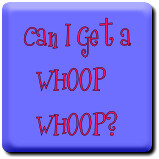
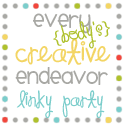
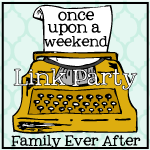

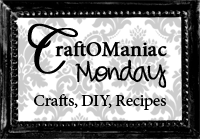

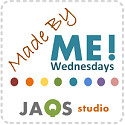





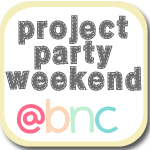

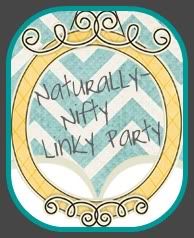
Wow, you did such a great job with the instructions and videos - I guess this will become a future business venture for you. This was amazing. Did you use a script? Even a novice could follow your instructions. And the quilt is so well done it looks like it's 3-D. Great job Heather. FYI, those are the colors Stephanie has chosen for her twin girls room (who are due in early May).
ReplyDeleteContrats to Stephanie! Are these her first? If I were to do this again, I would make it 5 blocks by 7 rows--that would make a beautiful almost-crib-sized quilt. If she wanted a floor blanket, the one I made or even 6x6 would work good. Maybe I could work something out with you if you don't want to do it yourself :)
DeleteScript ... well that never works when I try it, but I have almost perfected a system.
These are Stephanie's first. I wish I had the time to quilt. We'll have to talk about this more, if you are willing?
DeleteI would love to do it, but I'm always nervous about it being just right ... I'd want everything to be perfect for you and for Stephanie! Send me a note on facebook if you want to work something out. It would probably take 4 to 6 weeks to crank out two crib-sized quilts. I will totally NOT be upset whatever you decide!
DeleteI love it! You did a wonderful job! Can't believe it's one of your first!
ReplyDeleteI'm so glad you like it!! I'll get it to you this week. I LOVE the way it turned out. I've already washed it once with Woolite, but you may want to do it with the detergent you'll use for the baby.
DeleteThe backing is gorgeous fabric---great tips too;)
ReplyDeleteThanks for stopping by and checking it out!
DeleteVery good. I learned how to quilt, but, not to sew other things. I'm also mainly self taught at quilting. I don't machine quilt, other than straight lines, tho. I stink at free motion (and I get bored by it,too). I do love to hand quilt. Keep up the quilting.
ReplyDeleteThanks for the encouragement. I wish I was better at hand quilting--I'm practicing, though.
DeleteSo cute!!! Loved your color choices.
ReplyDeleteThanks for stopping by! Appreciate your comments!
DeleteSo beautiful!
ReplyDelete-Melissa
www.serendipityandspice.com
Thanks for stopping by! I added your cute blog to my RSS feed.
DeleteVery nice finish on the quilt :)
ReplyDeleteLove for you to share this at my Wednesday's "Made by ME" linky party here:
http://www.jaqsstudio.com/2012/02/made-by-me-20-linky-party.html
Done ... and added to my RSS feed so I remember to keep coming back. Have a great week!
DeleteI've been totally into the chevron craze lately and this quilt is amazing! I've only made one but this makes me want to try again!
ReplyDeleteI think you'd enjoy the process. It really took me out of my everyday and forced my focus. I LOVE the way it turned out and I know you would too. Send me pics if you do make one. I love to see how everyone personalizes projects!
DeleteWhat a fun tutorial :) Thanks for linking up :)
ReplyDeleteThanks! I love seeing all of your blocks and swap projects!
DeleteI won a $25 cert from Green Fairy Quilts from your site at the end of Feb. I honestly can't find that post, but wanted to let you know how much I appreciated it! They were awesome to work with and I got my fabrics and will finish the top of the project this week. It will be a blanket I'm donating for a silent auction; I'm so excited. Thanks again!!
DeleteGreat tutorial! Wonderful project!
ReplyDeleteThanks for checking it out. Hope you make one sometime!
DeleteThis is so beautiful! I love the chevron pattern so much! Thank you for taking the time to make a tutorial too... although it may be a bit advanced for myself!!!
ReplyDeleteI am having a project party... you can link this up if you want or any of your projects: http://bubblynaturecreations.com/2012/03/project-party-weekend-pretty-striped-pencils-tutorial.html
Hope you can come!
Cute blog! I got linked up. Hope your other readers enjoy it too.
DeleteThis is so cute!! You did a wonderful job! I would love for you to stop by and link up to our Naturally-Nifty Party (ends at midnight tonight!)
ReplyDeletehttp://www.natural-nester.blogspot.com/2012/02/naturally-nifty-linky-party-4.html
-Natural-nester
I did make it over before your time expired. Cute stuff. I love that I can *like* the other projects and give some feedback that way.
DeleteThat is so nice! Chevron is everywhere this spring and I would love to make a quilt but even with your amazing instructions; I'm pretty hopeless.
ReplyDeleteThanks for sharing.
Jan
Unique Baby Nursery Decorating Ideas
I'm dropping by as the guest judge on The CSI Project this week. This is a fantastic tutorial. I'm so inspired by people who can sew! Great job!
ReplyDeleteThanks for stopping by! Enjoy cruising all the projects!
DeleteThis is so adorable. I need to learn how to sew better so I can make this!
ReplyDeleteComing over from CSI Link Up party, please visit my link up at http://creativecowgirl.co/2012/03/09/pinterest-inspiration-a-birthday-splat-mat/
Thanks! I'm interested in the pinterest blog hop you talked about if you have more information ...
DeleteAdorable. I love the colors you chose!
ReplyDeleteThanks! The colors were a request from the mom-to-be. I really liked how it all came together for her.
Delete